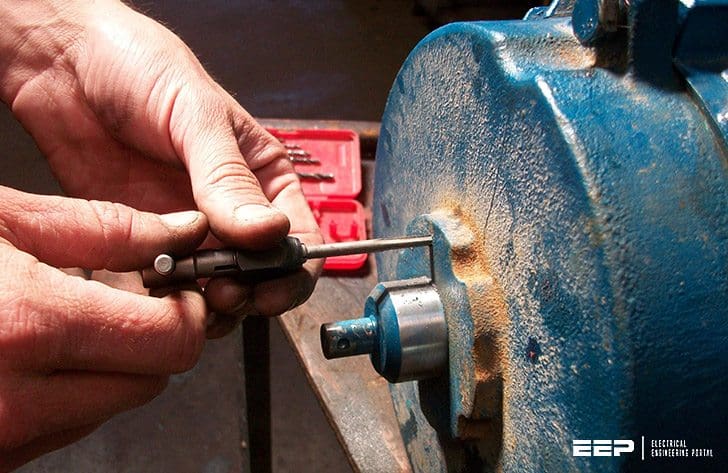Repair or replace motor?
The cost of repairing an existing electric motor is often much less than replacing. However, the number of running hours the motor sees per year will play heavily in the decision to repair or replace.

The following example in Table 1 illustrates a simple example of an economic analysis.
The motor in this example has a both a high load factor and annual running hours which contribute significantly to the case for replacement with an energy efficient motor. Even replacement of a healthy standard efficiency motor is somewhat attractive.
However, the decision to repair is less clear for motors that have few running hours per year.
Table 1 – Economics of Repair or Replacing a Motor
| Motor Size HP | 40 |
| Existing Motor Efficiency | 87% |
| Premium Motor Efficiency | 94.5% |
| Annual Energy Cost Savings ($0.05/kWh) | $1073 |
| Repair Price – Rewind Only | $1000 |
| New Premium Eff. Motor | $1700 |
| Price Differential | $700 |
| Load Factor | 0.75 |
| Hours/Year | 8000 |
| Simple Payback Months on Differential | ~8.3 |
| Simple Payback Months on Replacement Cost | ~25 |
If the motor is a critical piece of equipment, replacement may be a good option in terms of reliability.
If the decision is to repair, exercise caution in selecting a repair facility. For larger motors, it is prudent to request core loss testing of the motor before and after the rewind is performed to ensure that the core has not been damaged.
Quality motor repair requires care to be taken at each step. Since modern insulation systems may include epoxies, stripping insulation from the stator core is often a difficult task to perform. Many repair shops bake the core to effectively burn out the old winding so it can be stripped.
If the oven temperature is too high, the varnishes used to insulate the laminations could break down.
Laminations accidentally peened over could short together resulting in hot spots and increased losses. Using either the wrong gauge of wire or not enough wire, will turns in the slots. For these reasons, it is important to get to know your repair facility and to insist on loss tests being performed.
A low cost poor quality rewind may cost more in the long run due to higher run losses and a possible shorter life. However, done properly, even a high efficiency motor can be rewound without incurring any loss in efficiency.
| Title: | Electric motor selection, control and maintenance guidelines – CEA Technologies Inc. (CEATI) |
| Format: | |
| Size: | 570 KB |
| Pages: | 166 |
| Download: | Here 🔗 (Get Premium Membership) | Video Courses | Download Updates |


